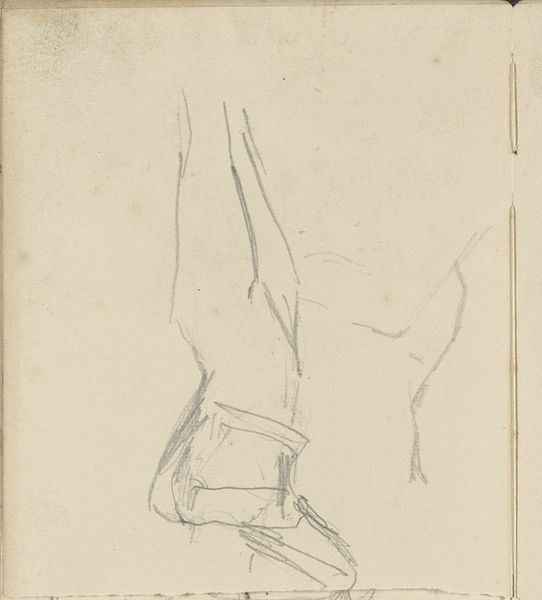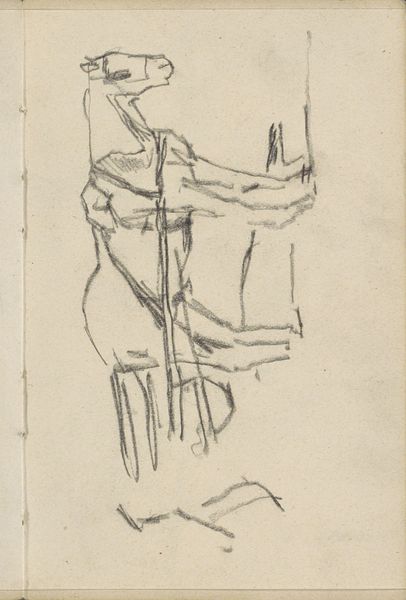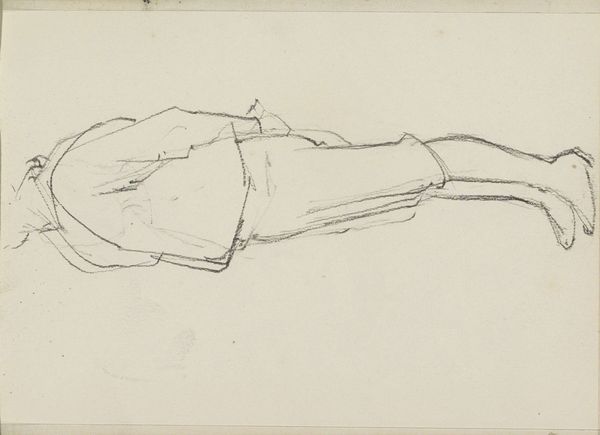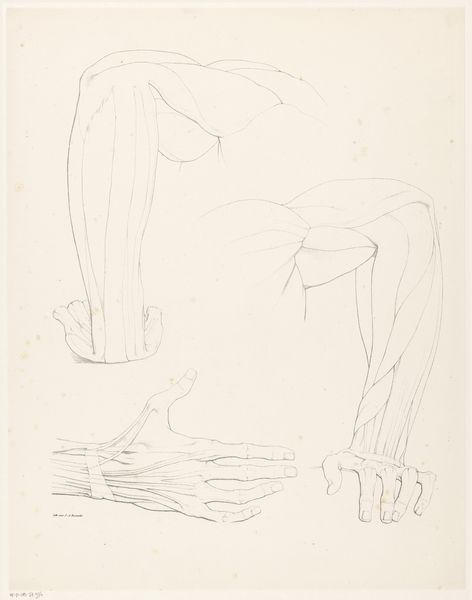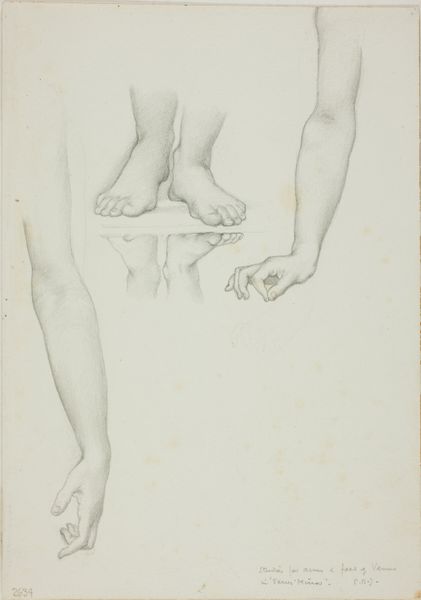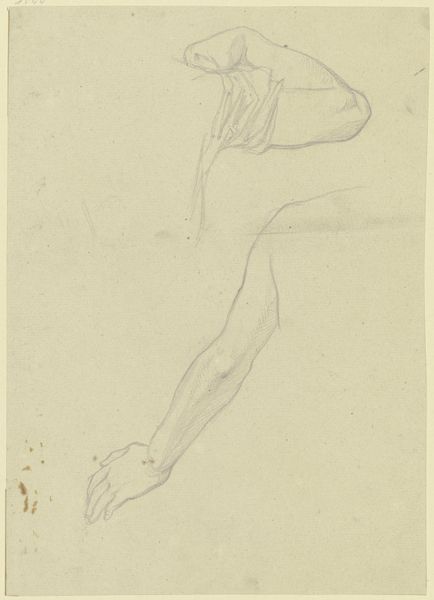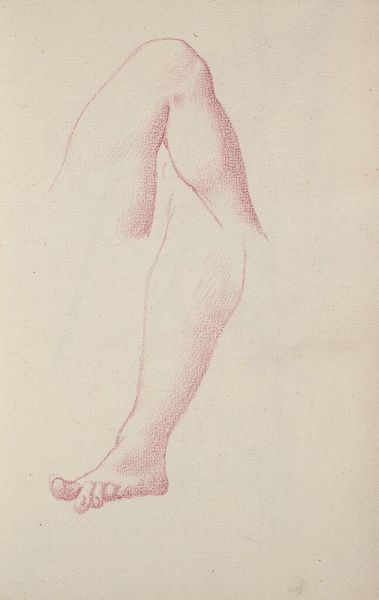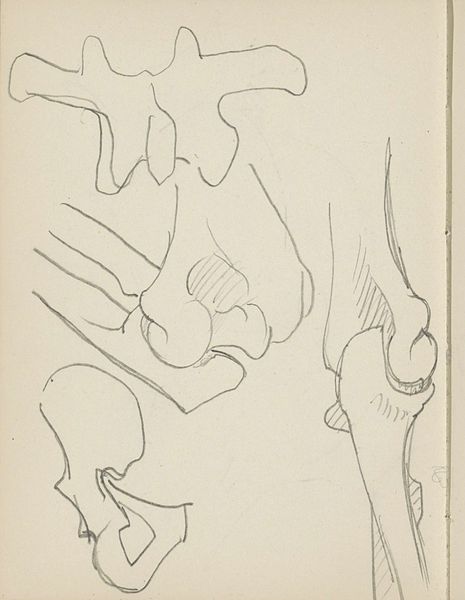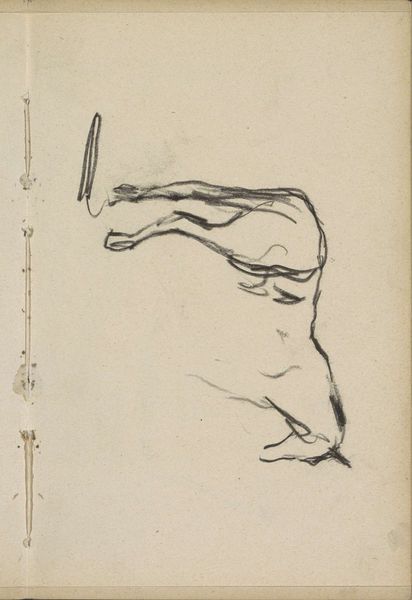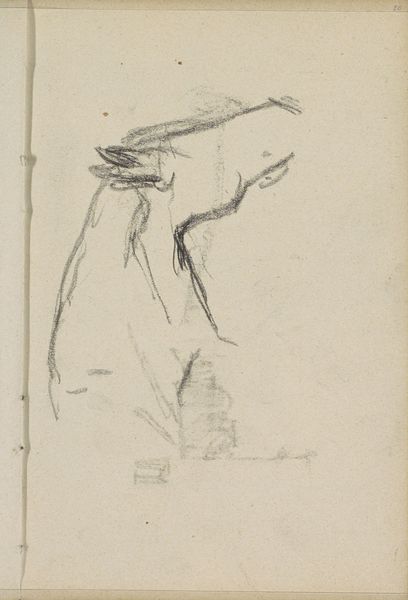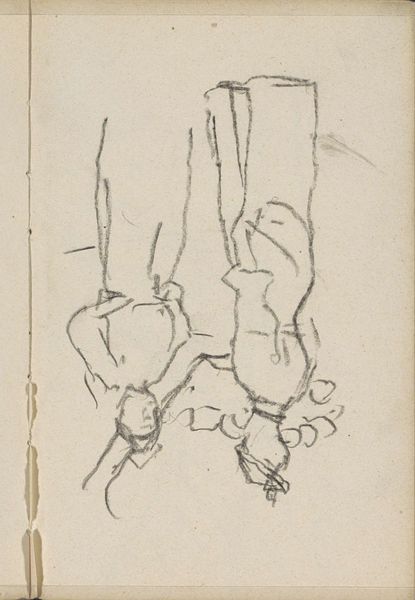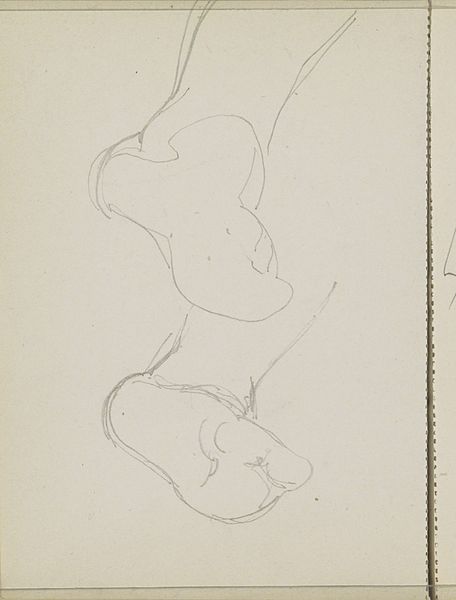
drawing, paper, pencil
#
drawing
#
figuration
#
paper
#
pencil
#
nude
Copyright: Rijks Museum: Open Domain
Curator: Right now, we’re looking at “Been en een voet,” or “Leg and a Foot,” a drawing housed here at the Rijksmuseum. It was created sometime between 1906 and 1945 by Reijer Stolk, using pencil on paper. Editor: Well, hello, anatomy study! My first thought? Honest. Utterly without pretense. Just raw lines, like he's feeling his way around the bones underneath. It's strangely vulnerable, don’t you think? Curator: I think that reading certainly holds up if you consider how the artist may have positioned this work for the consumption of the general public during this period. During the early to mid-20th century, museums and galleries saw a democratization of the arts in general, where anatomical studies had formerly been restricted to strictly scientific audiences. Editor: Mmh, a scientific specimen suddenly thrust into the art world. I can dig it. But for me, the beauty's in the imperfection. Those hesitant lines around the knee, the smudging on the heel... It's like witnessing a fleeting moment of artistic discovery. Makes me want to grab a pencil and just...see. Curator: I think those apparent imperfections really lend themselves to the historical and social atmosphere as well. Consider how social realism art movements influenced artistic style during the period that the piece was rendered. Editor: True. All these naked legs! Makes one question which purpose they’re used to serve as social or anatomical instruments... The fact that we see a pencil drawing in an age defined by the early advancements in mass communications. I like to believe there is an honest humanism embedded into such decisions, or lack thereof, if made incidentally. Curator: Well, thank you for taking a closer look at this drawing, its historical setting, and some interesting contemporary insights! Editor: The pleasure was all mine. Made me think differently, for sure.
Comments
No comments
Be the first to comment and join the conversation on the ultimate creative platform.
